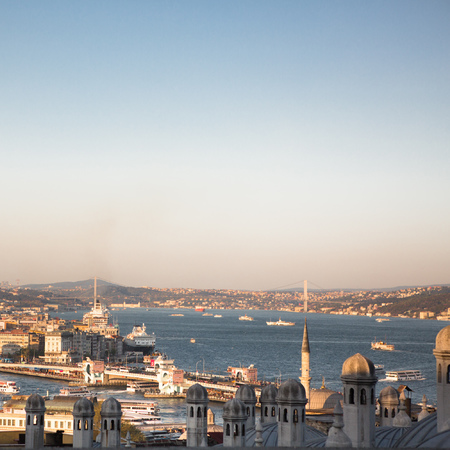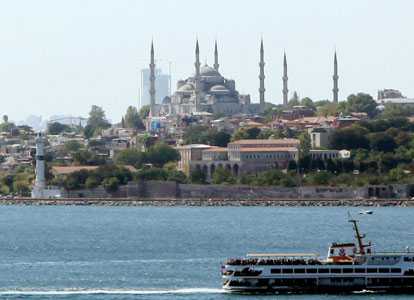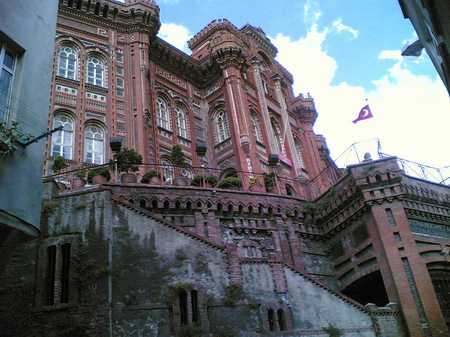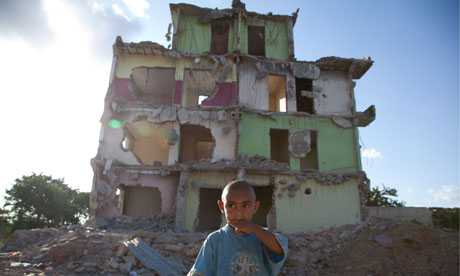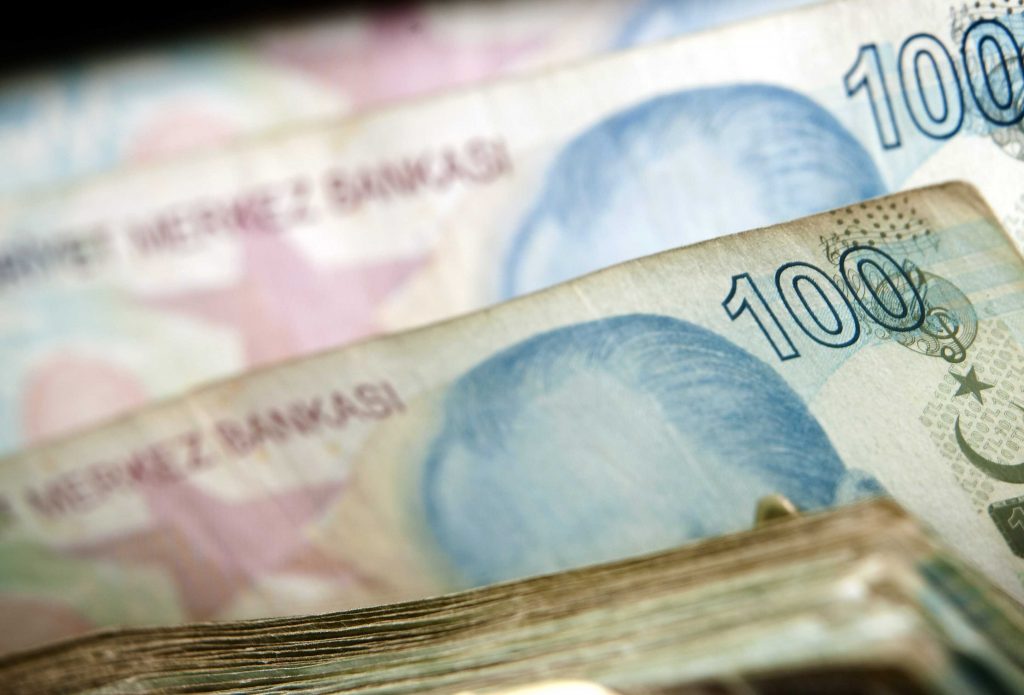On the lower shores of the Golden Horn – the oozy inlet of the Bosphorus that divides European Istanbul from its touristy historic centre – I witnessed my favourite fiddle. The trick is known across the Mediterranean as the gold ring scam. You’ll be strolling along when a fellow walker stumbles over a gold signet ring, which he assumes must be yours. Handle it and your new friend will want a finder’s fee. Or a willowy accomplice might spring from a side street claiming it was hers all along, and only a crossed palm of silver will resolve her indignation.
Yet the tranquil upper reaches of the Golden Horn are a world away from such chicanery. Opposite the waterway’s Ayvansaray bus stop, the first of 96 raggedy-jaggedy towers marks the edge of ancient Constantinople. From here, five miles of crumbling city walls run down to the sea on Istanbul’s southern shore.
Built by the Byzantines to repel barbarian hordes, they were finished just in time to keep out Attila the Hun in 448AD. Passing markets, ancient mosques and finely frescoed churches, they offer a passage back to early Ottoman times, devoid of tourists and tricksters alike.
Many of Istanbul’s grandest monuments were given a kiss of life as the city basked in its Capital of Culture 2010 celebrations. Not these city walls. Mossy steps allowed me to clamber up to the top of the first tower for panoramas over this city of 13 million souls. My gaze swept across ancient mosques and modern stadia in the early morning sun, the mighty Bosphorus and the forests of Anatolia, the iconic Galata Tower skylined against the brand new Trump Towers.
For the next half-mile the footpath along the wall offered a historical helter-skelter through old Istanbul. First was a mausoleum of Arabian warrior Ahmed el Hudri, where chanting devotees bowed heads before a draped tomb. Other long-dead acolytes lie under the surrounding gardens. Turbans topped the tombstones of the ancient faithful. The path soon stumbled past a dainty little mosque designed by famed Ottoman architect Mimar Sinan. I paused at the yellow Egrikapy Panayia orthodox church, where I was the first visitor for weeks.
Further on, chickens were roosting in the fortifications. A father and son team were flogging fresh anchovies from an icy pushcart. Once-grand wooden villas crumbled into figgy gardens. An outdoor bird market rounded off the first mile mark near Hirami Ahmet Pasha Mosque, a converted Eastern Orthadox church from pre-Ottoman times. Old chaps in flat caps cupped pigeons and doves, however it was all puff and wind; the only bird trader making any money was the one selling packets of seed.
The city wall runs downhill from here to Edirnekapi – the Gate of Edirne – which once led to the Ottoman Empire’s European domains. The towers seemed taller and bulkier here, and with good reason. This topographical dip in Istanbul’s defences has been the focus of many a marauding horde. Bulgars and Kievian Rus battered the bastions in the first millennia, as did early Arabs – who nearly succeeded in taking Istanbul for Islam seven centuries before the Turks.
The top of one restored tower offered an awesome panorama over the defences, a Great Wall of Istanbul, panning into the distance. The scene would have rung true back in 1453 when the current Turkish tenants moved in to stay. In April of that year, Sultan Mehmet II arrived at the city walls with 100,000 soldiers, determined to flip the last vestiges of the Byzantine Empire into the Ottoman realm. But when Mehmet marched through the walls victorious, he promptly put a stop to any looting and paid tribute in the great Hagia Sophia cathedral. The Ottomans preserved almost all of classic Constantinople, including the 5th-century Chora Church next to the city walls. Now a museum, its frescos and gold mosaics retell biblical history in a spellbinding riot of colour.
Next door to the church, I stopped for lunch at Asitane Restaurant, a treat for historians of a culinary kind. Here owner Batur Durmay recreates long-lost Ottoman dishes. A highlight is slow-baked goose kebab with almond pilaf, a dish with history: it was previously served at one of Sultan Suleyman the Magnificent’s circumcision ceremonies back in 1539.
History was visible at every turn as the towers rolled down to the Sea of Marmara. I followed a group of students into a towering gatehouse filled with Greek inscriptions, remembering that it was once a portcullised murder hole for barbarian hordes.
The moat that ringed the city centuries ago was more visible in this section too. In more recent years, it has been developed into a fertile patch of smallholdings, timelessly picturesque at sunset against the walls.
It was into central Istanbul, a maelstrom of modernity, that that I now headed. Today the area is known as much for its rooftop bars as it is for the Grand Bazaar. For the walls, the end of the line is Yedikule, the city’s former Golden Gate. It was once used by victorious generals returning from a foreign “triumph” and was punched through in 1889 by the Orient Express. A local train still draws into the Yedikule platform and rattles for three miles along the Bosphorus to Sirkeci station, the terminus of European rail. En route, it runs parallel to another length of city walls… but that’s another story.
Travel essentials: Istanbul
Visiting there
* Chora Museum, Kariye Camii Sokak (choramuseum.com). Open Thu-Tue 9am-5pm; TL15 (£6).
Eating & drinking there
* Asitane, Kariye Camii Sokak (00 90 212 635 7997; asitanerestaurant.com).
More information
* Tristan Rutherford is the author of the “Istanbul à la Carte” map, published this month, and priced €8.90 (alacartemaps.com).
via Istanbul: Direct line to Turkey’s past – News & Advice – Travel – The Independent.

